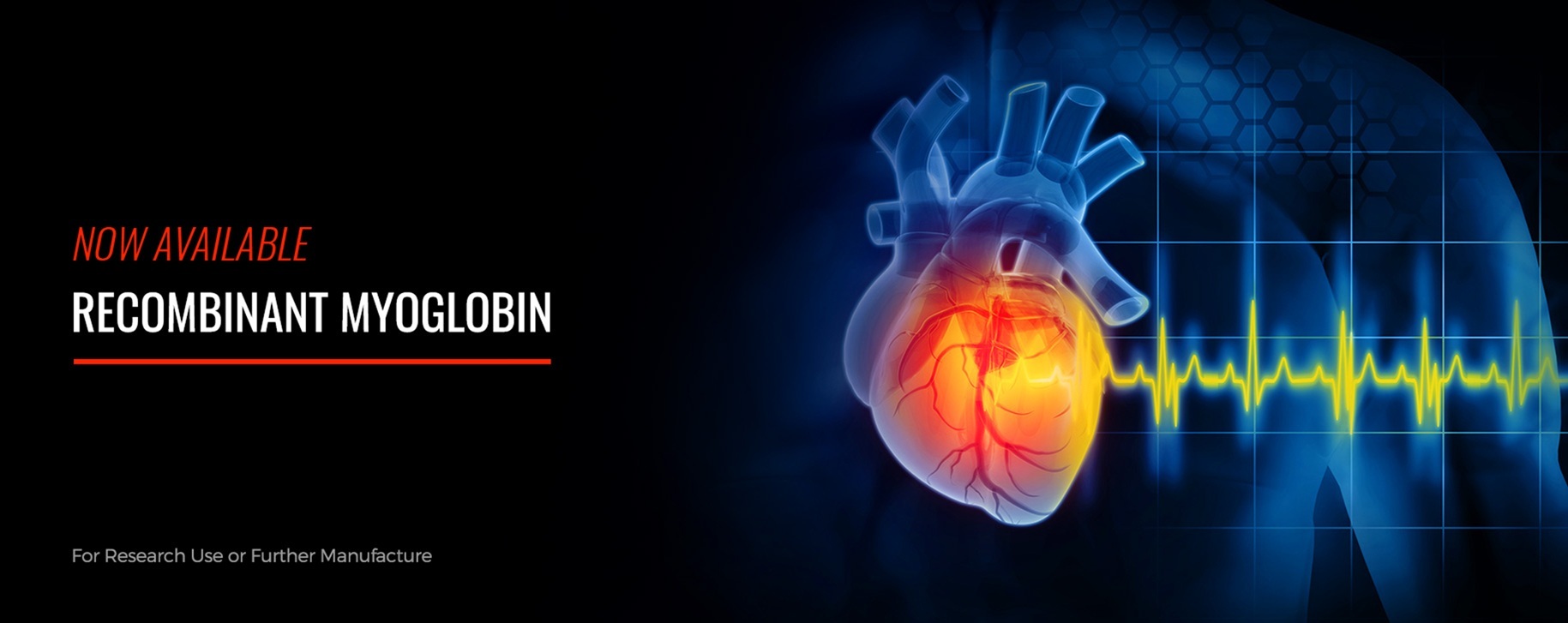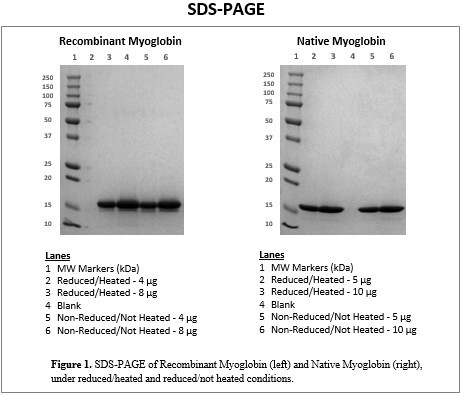Recombinant Myoglobin

(View Recombinant Myoglobin Data as PDF)
Serum assays for myoglobin have been used in cardiovascular diagnostics since the 1970s. Originally intended to diagnose myocardial infarction (MI), myoglobin is not specific to heart tissue, limiting its utility for that purpose. Assays for the cardiac forms of troponin I (TnI) and troponin T (TnT) are far more sensitive and specific; thus, they are the industry’s gold standard biomarkers for MI diagnosis. Despite this, myoglobin assays are still of significant value in cardiovascular and critical care applications.
Upon MI, myoglobin is released into circulation by cardiomyocytes, with serum levels being detectable within 0.5-1 hour. It is cleared by the kidneys quickly and serum levels usually return to normal within 24 hours. In contrast, TnI and TnT can remain elevated for 1-2 weeks after MI. The rapid clearance of myoglobin makes it an effective biomarker for the detection of re-infarction in individuals who have recently undergone an ischemic event.(1) In addition, when used in combination with serum assays for TnI or TnT, myoglobin is extremely effective at ruling-out MI; the dual biomarker approach exhibits a negative predictive value of 99.6%.(2)
In addition to its cardiovascular utility, myoglobin helps diagnose and/or determine the course of treatment for many skeletal muscle-related critical care conditions. These include rhabdomyolysis, muscle damage due to crush and trauma injuries, acute compartment syndrome, muscular dystrophy, and many others. Furthermore, myoglobin assays are useful in assessing risk for sepsis, sepsis-induced cardiorenal syndrome, post-sepsis syndrome, and COVID-19.
SDS-PAGE
Figure 1 presents an SDS-PAGE images comparing recombinant myoglobin (Mat. No. M0726-90695) to native myoglobin (Mat. No. M0724-90026) from Scripps Laboratories. Analysis of the gels reveals comparable molecular weight profiles between recombinant and native myoglobin, under reduced/heated and non-reduced/not heated conditions. Both purified proteins run at the expected molecular weight of 16.7-17.7 kDa. A low molecular weight band can be seen in the recombinant myoglobin gel, running just under the main band. The HPLC data, discussed in the next section, suggest this lower molecular weight band is an artifact of the sample processing required for the SDS-PAGE.

HPLC
The HPLC elution profile for recombinant myoglobin, is shown in Figure 2. The chromatogram reveals a clean, single peak, indicative of a highly purified protein. Recombinant myoglobin eluted at 22.248 minutes, with a purity of 99%.

Human tissues and organs, including hearts required for native myoglobin purification, remain costly and difficult to obtain. Consequently, the clinical diagnostic industry is increasingly adopting recombinant forms of many native proteins that are otherwise expensive and challenging to source.
Recombinant myoglobin from Scripps Laboratories is a suitable replacement for native myoglobin. The material is stable and each lot is confirmed to be immunologically active by assay on a clinical immunoanalyzer. Material is in stock and available in bulk quantities. Use the link below to learn more.
Recombinant Human Myoglobin is in stock and available now:
M0726-90695 - Recombinant Myoglobin, ≥95%
References
1. Green, Skarbek-Borowski, Chan, et al. Acad Emer Med. 7(6): 625-636.
2. McCord, Nowak, McCullough, et al. Circ. 104(13): 1483-148
